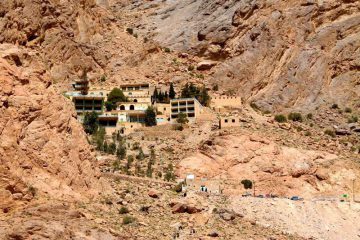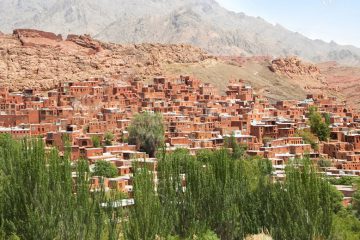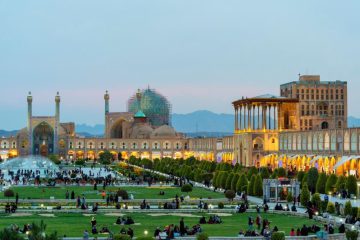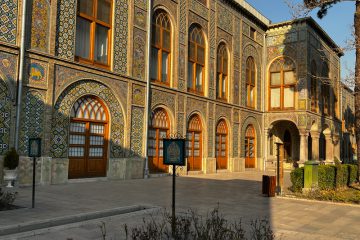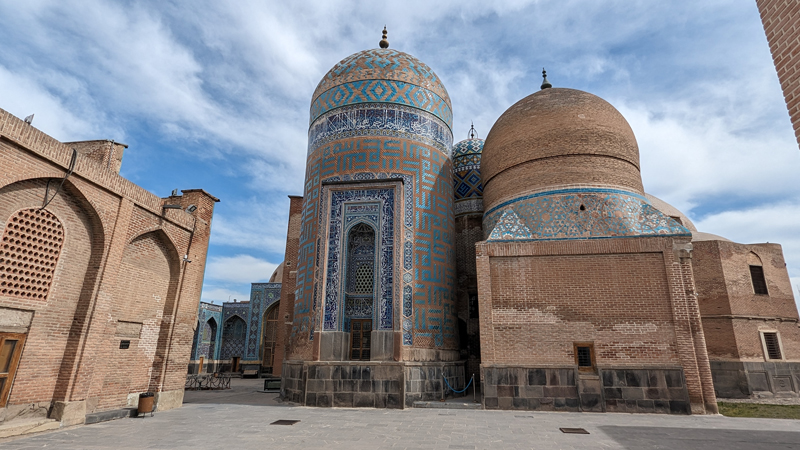
Sheikh Safi Al-Din Mausoleum
The Sheikh Safi al-Din Khanegah and Shrine Ensemble, a UNESCO World Heritage site, stands as a masterpiece of post-Islamic Iranian architecture in Ardebil, Iran. Renowned for its blend of traditional Iranian architectural styles from the Ilkhanid and Timurid periods, it serves as a beacon for both Iranians and visitors from around the world. Registered as number 1345 on the UNESCO World Heritage list, this site is deeply inspired by Sufism and showcases the rich cultural heritage of Iran.
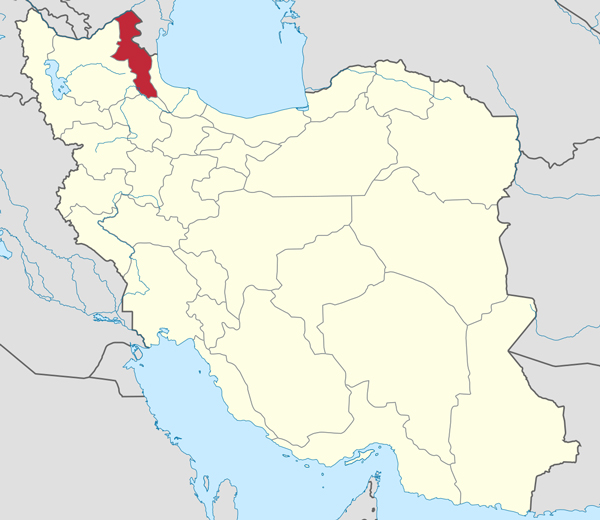
If you’re planning a visit to Ardabil, the main attraction undoubtedly lies in exploring this magnificent shrine. But why choose to visit the Sheikh Safi Al-Din Ensemble?
- This revered monument in Ardabil holds UNESCO World Heritage status.
- The Sheikh Safi Al-Din Khānegāh stands as one of the largest, most comprehensive, and prominent Khaneqas, designed for Sufi brotherhood gatherings.
- It’s a rare historical gem, showcasing masterful 14th to 18th-century architecture, particularly renowned for its intricate tilework.
- Notably, the site features elaborate stucco arcades, adding to its architectural allure.
- The influence of the Sheikh Safi Al-Din Khānegāh extends as a model for other khaneqahs and sanctuaries.
During the Islamic conquest of Iran, Ardabil stood as the largest city in northwestern Iran. However, it faced devastation during the Mongol invasions, leading to its decline for three centuries. The rise of the Safavid Dynasty, named after Sheikh Safi al-Din (1252-1334), marked a resurgence for Ardabil.
The Sheikh Safi al-Din Khanegah and Shrine Ensemble, the final resting place of Sheikh Safi al-Din Ardabili, ancestor of the Safavid kings, is a stunning masterpiece of art and architecture. Commissioned by Sadr-al-din Musa, the Sheikh’s son, the complex has evolved, with additional parts added during the early Safavid dynasty.
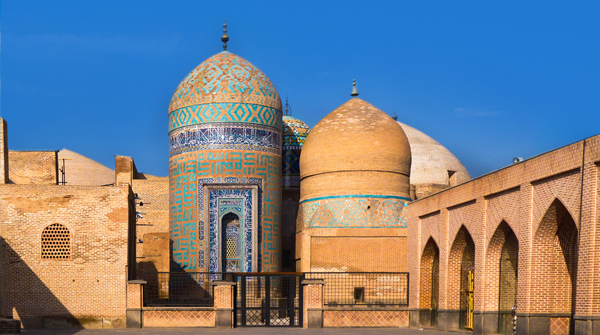
Sheikh Safi al-Din, after learning from Sheikh Zāhed e-Gilāni, succeeded him upon his master’s passing and established his spiritual order, known as the Safavi Sufism. He laid the foundation for a khānegāh in Ardabil, which eventually transformed into his revered shrine.
Built between the early 16th and late 18th centuries, this spiritual sanctuary, deeply rooted in the Sufi tradition, embraces traditional Iranian architectural styles to optimize space for a multitude of purposes. It includes amenities such as a library, mosque, school, mausoleum, cistern, hospital, kitchens, bakery, and offices. A pathway leading to the Sheikh’s shrine is intricately designed with seven segments, symbolizing the seven stages of Sufi mysticism, and adorned with eight gates representing the eight attitudes of Sufism. The complex features well-preserved, intricately adorned facades and interiors, housing an impressive collection of antique artefacts, making it a rare embodiment of medieval Islamic architecture.
Sufism, derived from the Arabic word “sūf” meaning “wool” or “safā” meaning “purity,” represents the inner mystical dimension of Islam rather than a separate sect. Originating in the 9th and 10th centuries, Sufism evolved into a spiritual movement that played a pivotal role in the dissemination of Islam and the formation of a cohesive Islamic culture across Africa and Asia. Flourishing between the 13th and 16th centuries, Sufism emerged as a dynamic religious and intellectual culture, guided by various orders or tariqats established by Sufi masters. Its influence is evident in the artistic expressions found primarily in Central Asia.
Initially, the ensemble operated as a compact, self-sustaining city, complete with markets, communal baths, religious spaces, residences, and administrative buildings.
Under the Safavid rulers, the significance of the site transformed into one of political and national importance as the revered shrine of the Safavid Dynasty’s founder. Shah Ismail, Sheikh Safi al-Din’s successor as the Sufi leader of the khanegah, ascended as the first shah of the Safavid Dynasty and established Shi’ism as the state religion.
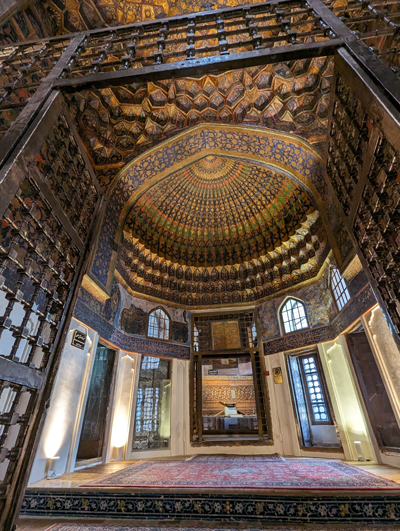
The shrine, enriched by the Safavids, became a global pilgrimage site adorned with stunning artworks spanning the 14th to 18th centuries. Visitors are captivated by mosaic tiles, intricate calligraphy, wood carvings, and more, all crafted by renowned Safavid artists.
Researchers have identified four primary building phases during which the most significant structures were constructed or extensively altered.
During the period from 1300 to 1349, the foundational layout of the shrine was established. Key structures erected during this time include the Sheikh Safi al-Din Ardabili Khānegāh, Haram-khānā, Allāh Allāh Dome, Sāhat, Dār al-Huffāz Hall, Shāhnishin, the Middle Courtyard, and the New Chilla Khānā.
The Allah Dome serves as the central feature of the Sheikh Safi al-Din Khaneghah and Shrine Ensemble. This octagonal structure boasts a striking turquoise blue dome adorned with repetitions of the word “Allah.” Beneath this dome lies the tomb of Sheikh Safi al-Din, along with the resting places of notable figures such as Shah Ismail I, the first king of the Safavid dynasty, his wife (Shah Tahmasp’s mother), various elders, officials, and those who fell in the Battle of Chaldiran.
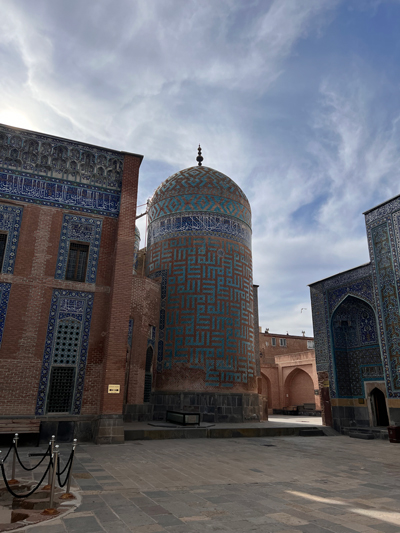
The Shrine of Mohyeddin Mohammad, also known as Haramkhaneh, serves as the final resting place of Sheikh Safi Al-Din’s son. Upon entering the shrine, you’ll encounter a straightforward corridor that guides you to a rectangular Riwaq, featuring a short dome above. The southern gate is embellished with stunning arabesque and floral motifs, while an impressive stucco frame adorned with various religious inscriptions adorns the entrance.
The Chini Khane, also known as the House of Porcelain or the Old Khaneqah, is a stunning architectural marvel from the 17th century. Its exterior boasts a symmetrical octagonal design, while the interior features a rectangular layout with intricate polygonal wall indentations. The name originates from Shah Abbas I, who commissioned the building after receiving porcelain gifts from the Chinese emperor. These gifts were later donated to the Old Khaneqah, with Shah Abbas’s seal adorning each item. The highlight of the Porcelain House is its ornate stucco arcade, reminiscent of the Music Hall in Ali Qapu, Isfahan. Additionally, the interior is adorned with exquisite tilework, stucco decorations, and gilded accents, adding to its splendour.
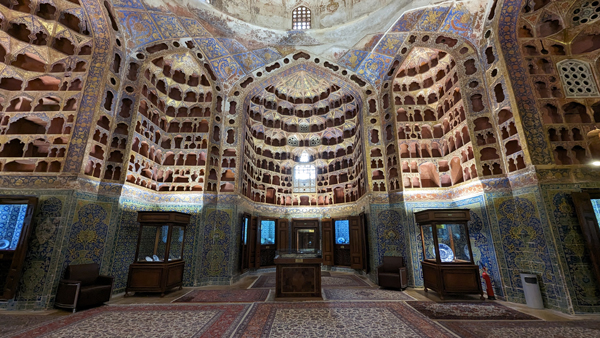
The Darol Hoffaz Hall, also known as the House of Icicle, served as a meeting place for Quran reciters, hence its name. “Dar” means place and “hoffaz” is an Arabic term for reciters.

From 1349 to 1544, significant additions were made to the shrine complex. This period saw the construction of sepulchres for Shah Ismail and his mother, along with structures like Dār al-Hadith, Jannatsarā, Shahidgāh, and the sepulchre yard south of Sheikh Safi al-Din’s tomb. The majority of these additions took place during the 16th century.
The Shrine of Shah Ismail I boasts magnificent artistic decorations, including gilded wall paintings and a stunning calligraphic inscription in stucco by a renowned artist. Adding to its artistic value is an intricately carved wooden case with geometric patterns, which encases Shah Ismail’s grave.
The Jannat Sara Iwan, also called a mosque, is a square-shaped space enclosed by walls on three sides, making it the tallest structure in the Sheikh Safi Al-Din complex. Inside, the walls are adorned with charming arched niches carved into each side. Interestingly, the mosque lacks a Mihrab, the traditional prayer niche, suggesting that it was primarily used for Sufi gatherings and rituals.
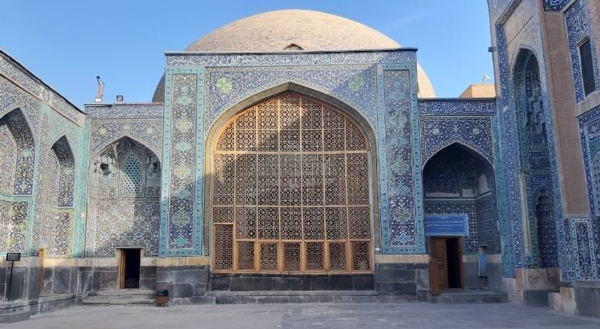
Darol Hadis, located in the eastern part of the ensemble, stands opposite the impressive Jannat Sara building. This structure was originally used for religious purposes, including religious education and discussions, during the reign of Shah Abbas I.
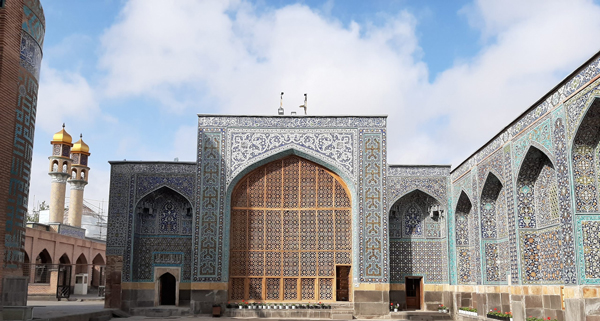
Shahidgah Graveyard holds a significant historical tale. Legend has it that after the occupation of Shirvan, Shah Ismail I, alongside Safavid nobles and commanders, brought the remains of his father and great-grandfather to Ardabil for burial in this cemetery. Additionally, some martyrs from the 16th-century Battle of Chaldoran fought between the Ottoman and Safavid Empires, were laid to rest here.
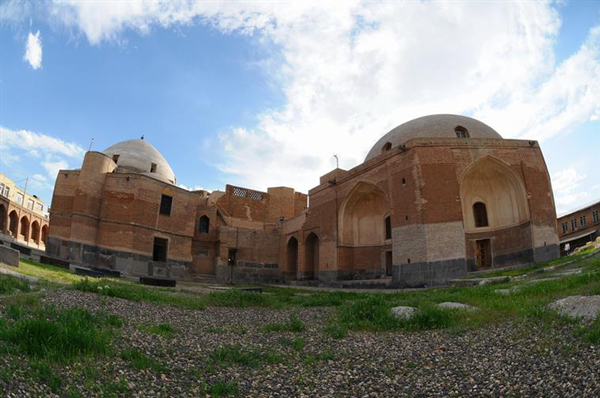
From 1752 to the 20th century, various additions were made to the complex, including the construction of the school, toilets, engine room, and greenhouse, with the majority of these structures dating back to the 20th century.
The designated site continues to serve as a place for worship and pilgrimage.
tours of Iran tries to create the best content and advisory for travelling to Iran. If you like to get familiar with one of the itineraries that includes visiting this beautiful World Heritage site click here

